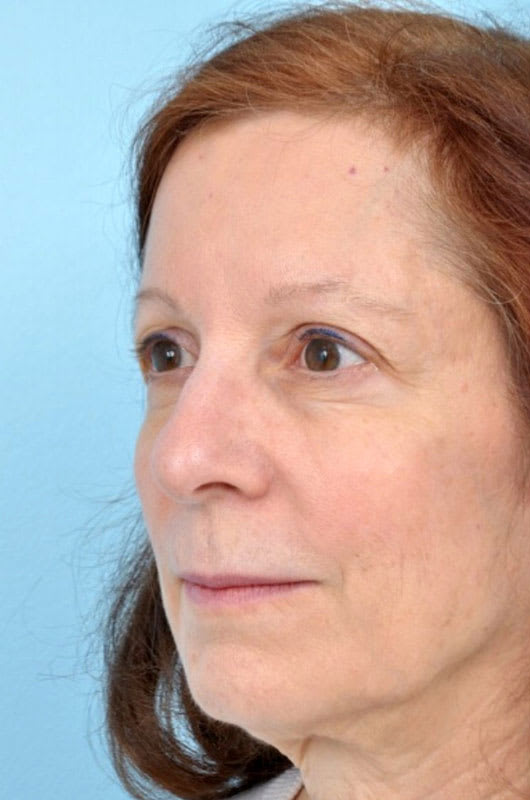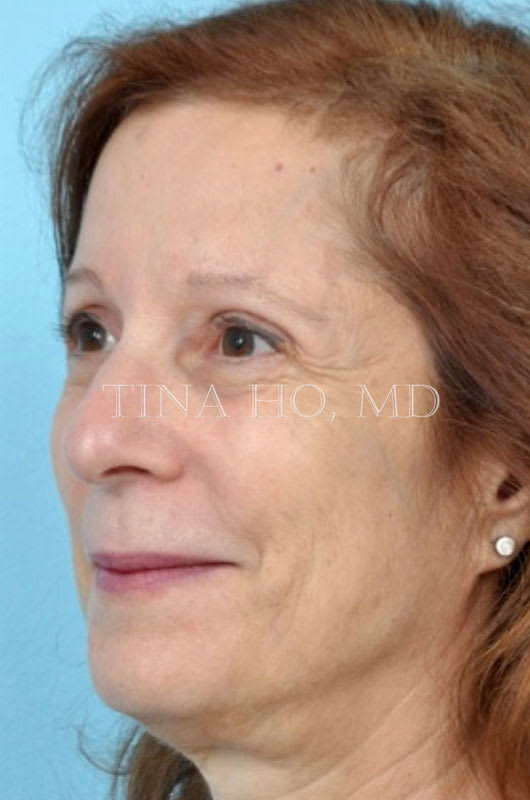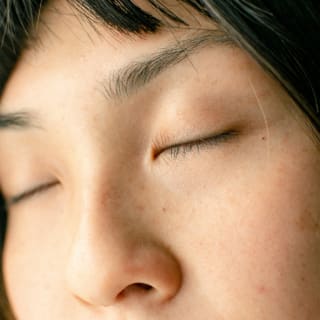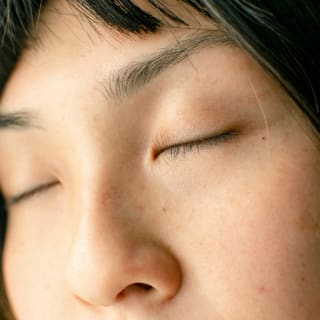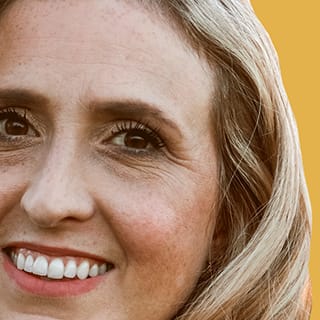
AEDIT
Try on Blepharoplasty Solutions
‘Try on’ aesthetic procedures and instantly visualize possible results with AEDIT and our patented 3D aesthetic simulator.
The Skinny
Blepharoplasty is a type of plastic surgery that corrects or repairs concerns of the upper eyelid (upper blepharoplasty) and lower eyelid area (lower blepharoplasty). It can be performed for several reasons, including smoothing of under eye bags and correcting droopy upper eyelids.
AEDITpro
Before & After Images by Provider
Before & After Images by Provider
Blepharoplasty Solutions
The Specifics
Brief Overview of Blepharoplasty Variations
There are 11 different types of blepharoplasty procedures, although the Medial and Lateral Epicanthoplasty techniques are rarely utilized as only a small population of people in the United States are true candidates for these procedures.
Cost Overview
Whether you are considering blepharoplasty as a way of eradicating issues that impair your vision or as aesthetic cosmetic surgery, knowing the cost of eyelid surgery is important in helping you plan accordingly. Blepharoplasty has a wide range of prices. The Lower Eyelid Malposition – Massage and Steroid Injection option falls on the lower end of the price spectrum and only costs approximately $25 - $300 per shot. The rest range anywhere from $1,500 - $5,000 depending on your procedure, your needs, your geographic area, and your surgeon’s pricing.
To better understand the price of the procedure, check out our complete guide to blepharoplasty cost.
Before and After Overview
For 4 weeks before and after your blepharoplasty, refrain from smoking as doing so restricts blood flow and could cause tissue damage. You will want to discontinue anti-inflammatory medicines, herbal medicines and medicines containing Aspirin® for 2 weeks before surgery, as well, as these can cause you to lose unnecessary blood during your surgery. Begin taking Arnica and Vitamin C 2 weeks prior, though, as these products may positively impact your ability to heal quickly.
On the day of your surgery, make sure that you fast for 6 hours before your procedure time, and that you refrain from wearing anything that could interfere with a successful surgery such as contact lenses, fake eyelashes, jewelry, creams, cosmetics or makeup of any kind.
After your surgery, it is very important that you take proper care of your eyelids to ensure successful healing. A helpful healing method to lessen your propensity for bruising, swelling and the related discoloration is to dip gauze pads in ice water, squeeze out the excess water and apply them to your eyes and cheek area during the critical first 48-hours. Keeping your head elevated, even when you aren’t using the ice packs, will also be helpful.
After 24 hours, you can begin showering and should carefully allow soapy water to cleanse your face and incisions. Be careful, though, about overly wetting the facial area and about letting the spray hit your incisions directly. For external eyelid incisions, dilute hydrogen peroxide with water and clean with a Q-tip. Cover the incision with your prescription antibiotic ointment (no over-the-counter ointments) 3 times a day for as long as instructed. Also, refrain from wearing your contacts until 2-3 weeks have passed.
You can begin light activity 3 days post-surgery, but be careful to avoid extreme physical activity, including sex, weight training and straining for several weeks. Stay away from all sun exposure, including sun lamps and tanning beds, and wear SPF 30 or higher to protect your skin from UVA/UVB damage.
Blepharoplasty Procedure Details
Asian Blepharoplasty
Also known as double eyelid surgery, Asian blepharoplasty surgically creates a new eyelid crease in the upper eyelid through suture ligation or an external incision. The suture ligation technique works by tying sutures to “crimp” or compress the eyelid tissue, which thickens it to create an indent once the suture is tied. This process creates a new crease, however, the crease will be static, meaning that it will not soften as you look downward and may eventually fade with time.
The external incision technique, on the other hand, forms a dynamic crease that does soften as you look down. Essentially, it adjusts and repositions the tissues of the eyelid to create a desirable crease height and is appealing for those with heavy eyelids or for those who want to keep a natural Asian look rather than a “Westernized” look.
An Asian blepharoplasty procedure is performed with 2 different techniques – the open/incisional approach, known for being the “gold standard”, and the partial incisional/suture technique which relies on sutures over incisions. Asian blepharoplasty procedures require 2-4 weeks of recovery and have average costs between $2,200 and $4,700 overall.
Lower Eyelid Blepharoplasty Transconjunctival Approach
While some patients are concerned with the way aging affects their upper eyelids, others are more concerned with the way sagging cheeks exacerbate problems with bags and dark circles under the eyes. This lower eyelid surgery cannot rid the area of excess skin that contributes to sagging, but it does noticeably reduce the bags and puffiness that you may be experiencing.
The lower eyelid blepharoplasty with a transconjunctival approach uses an incision directly inside the eyelid along with a double skin hook or traction suture to uncover the fat within the orbital compartments that need re-sectioning or removal. After the sections of fat have been addressed, your surgeon will replace the leftover fat to its original position and replace the conjunctiva. Even though this procedure requires small incisions, you will not need to have sutures. Instead, the orbital fat is replaced to appear natural and the area heals within 1-2 weeks.
A lower eyelid blepharoplasty with a transconjunctival approach is especially well-received in patients with younger, smooth skin with minimal fat and muscle protrusion who are seeking to reduce the appearance of wrinkles and fat bulges in the lower eyelid. It is not recommended for those who have other issues to address, such as skin laxity, which refers to sagging skin due to a loss of collagen and elastin. The total cost for this surgery is between $2,000-$4,000.
Lower Eyelid Blepharoplasty Transcutaneous Approach
This technique is another surgical procedure option that targets issues with bag and dark circles under the eyes; however, instead of an incision inside the eyelid as with the transconjunctival approach, your surgeon will make an incision just below the eyelashes. Making an incision so close to the lash line allows your surgeon to tighten the lower eyelid muscle that contributes to the sagging. It also facilitates repositioning and trimming of the excess skin and fat causing your under-eye issues.
As you age, you gradually begin to lose the smoothness of your face. Eventually, the streamlined look from the lower eyelid to the cheek area will lose its suppleness and a protrusion of fat build-up will separate the 2 areas from one another as the eye elongates sags and wrinkles. Although fat is removed during this procedure, it is only the fat that makes its way into the incision wound once it is opened. Fat removal is not forced to avoid causing damage to the area. The flap of skin-muscle that was removed to excise the fat is re-draped, fitted with a vertical lid suspension stitch and closed with a running suture. Surgical glue may also be used as a method of reinforcing the sutures, and surgical tape is used to ensure that the eyelid suspends laterally during the healing process.
A lower eyelid blepharoplasty with a transcutaneous approach is perfect for individuals with a great deal of excess skin, dark under eye circles, and a prominent orbicularis muscle swag, which refers to the look of the eyelid itself. It is not recommended for those with chronic dry eyes or those with bulging eyes or a history of thyroid disease. Recovery time for this procedure lasts approximately 1-2 weeks and the overall cost is $2,000-$4,000.
Lower Eyelid Malposition – Massage and Steroid Injection
This procedure uses a combination of massage, steroid injection, and topical lubrication. This is generally performed to address complications that might have developed during a prior surgery or as a way to improve ectropion, a condition that causes your lower eyelid to turn in an outward position leading to irritated eyes. The Mayo Clinic recommends seeing your doctor when this condition leads to vision problems, swift changes in the redness of the eye or discomfort related to light. Unless your condition becomes excessive, your surgeon will begin treatment with topical lubrication to decrease, and ultimately prevent, symptoms of ulceration and keratitis. Abnormal scar retraction is often treated with both a steroid injection and a massage.
This technique is helpful for those who are experiencing complications related to the re-sectioning of excessive skin during a Lower Eyelid Blepharoplasty. It is not recommended for those who are experiencing an extreme form of these complications or whose previous steroid injections were unsuccessful. These patients may find greater benefit in receiving surgical correction. There is no recovery needed for a Lower Eyelid Malposition, and the prices range from $25 per shot to $300 per shot.
Lateral Canthal Suspension Canthopexy for Lower Eyelid Malposition
This procedure helps prevent complications associated with a lower blepharoplasty by surgically stitching and reinforcing the canthal tendon without needing to remove it. This effectively lifts the lower eyelid to improve your appearance and vision and to ease the look of droopy eyelids.
A lateral canthal suspension canthopexy fully preserves the orbicularis muscle through the process of suturing the lining of the bone directly beside the orbital rim where the muscle has been pulled upward. Excess skin is removed only after the incision has been closed, and the visible incision itself is relative to the amount of skin removed.
This procedure, which costs between $1,500-$5,000, is ideal for those who are experiencing only mild to moderate drooping of the eyelid or minimal palpebral ectropion (outward-turning eyelids). It is not recommended for those with severe ectropion or overly loose, sagging skin who would find more desirable results through a more invasive facial plastic surgery procedure, such as a canthoplasty, which focuses more on reconstructing the corners of the lower eyelid. An article published by US National Library of Medicine discusses this restoration in further detail if you believe this would be more beneficial, however, barring any severe issues that would limit the effectiveness of this surgery, the lateral canthal suspension canthopexy is a successful way to improve your appearance and vision. It also only requires only 2 days – 2 weeks of recovery time whereas a more invasive procedure would require more downtime, and likely, a higher overall cost.
Lateral Tarsal Strip Canthoplasty for Lower Eyelid Malposition
This technique provides superior lifting and tightening of the eyelid. Used for several positional concerns, such as retraction and ectropion, the lateral tarsal strip canthoplasty for lower eyelid lifts the lower eyelid to allow for better vision and a more youthful appearance.
This procedure uses a local anesthetic and provides relatively long-lasting results directly related to the nature of your daily activities and your diligence in following the postoperative care instructions provided by your surgeon. A lateral tarsal strip canthoplasty for lower eyelid malposition requires 10 days to 3 months of healing time. Your total costs are not expected to exceed $1,500, however, you may find that it costs as little as $0, especially if it is combined with another procedure, such as a midface lift.
Patients with loose or sagging lower eyelids will produce a condition called “scleral show”. This is a condition whereby too much of white sclera appears below the patient's iris, causing a tired look in the patient appearance. Lateral tarsal strip canthoplasty tightens the lower eyelid and corrects this condition. The long, sagging eyelids or those who have not been delicate with the eye area find the greatest benefit from this procedure as things like daily contact lens usage and frequent use of eye drops cause considerable wear and tear on the upper and lower eyelid. It is not recommended for those with a large globe, shallow orbit or hypoplastic malar eminence, which is caused by a loss of facial fat volume during the aging process.
Medial and Lateral Epicanthoplasty
These procedures are mostly performed in Asian countries and are rarely performed in the United States as very few people are candidates for this type of technique. The primary focus of these procedures is to address the “Mongolian fold” for those who might wish to reshape their eyes into a more Westernized shape by making them appear larger. This is achieved either by combining the medial and lateral techniques or by focusing on an area individually. A medial epicanthoplasty has a more central focus while the lateral epicanthoplasty focuses more on the outer corners of the eye area.
These procedures widen the eye area, however, your inner eyelid fold will need to be assessed before scheduling surgery as your surgeon may want to discuss alternate, more widely-used, and perhaps more effective procedures to achieve this effect.
Blepharoplasty Recovery Details
Upper or lower, all eyelid surgery candidates can expect pain, swelling, and bruising following surgery. While actual recovery time varies by invasiveness and your body’s natural healing process, seven to 14 days is a safe amount of time to assume you’re going to be uncomfortable and not necessarily looking your best. To better understand the healing and downtime associated with the procedure, check out our complete guide to blepharoplasty recovery.
